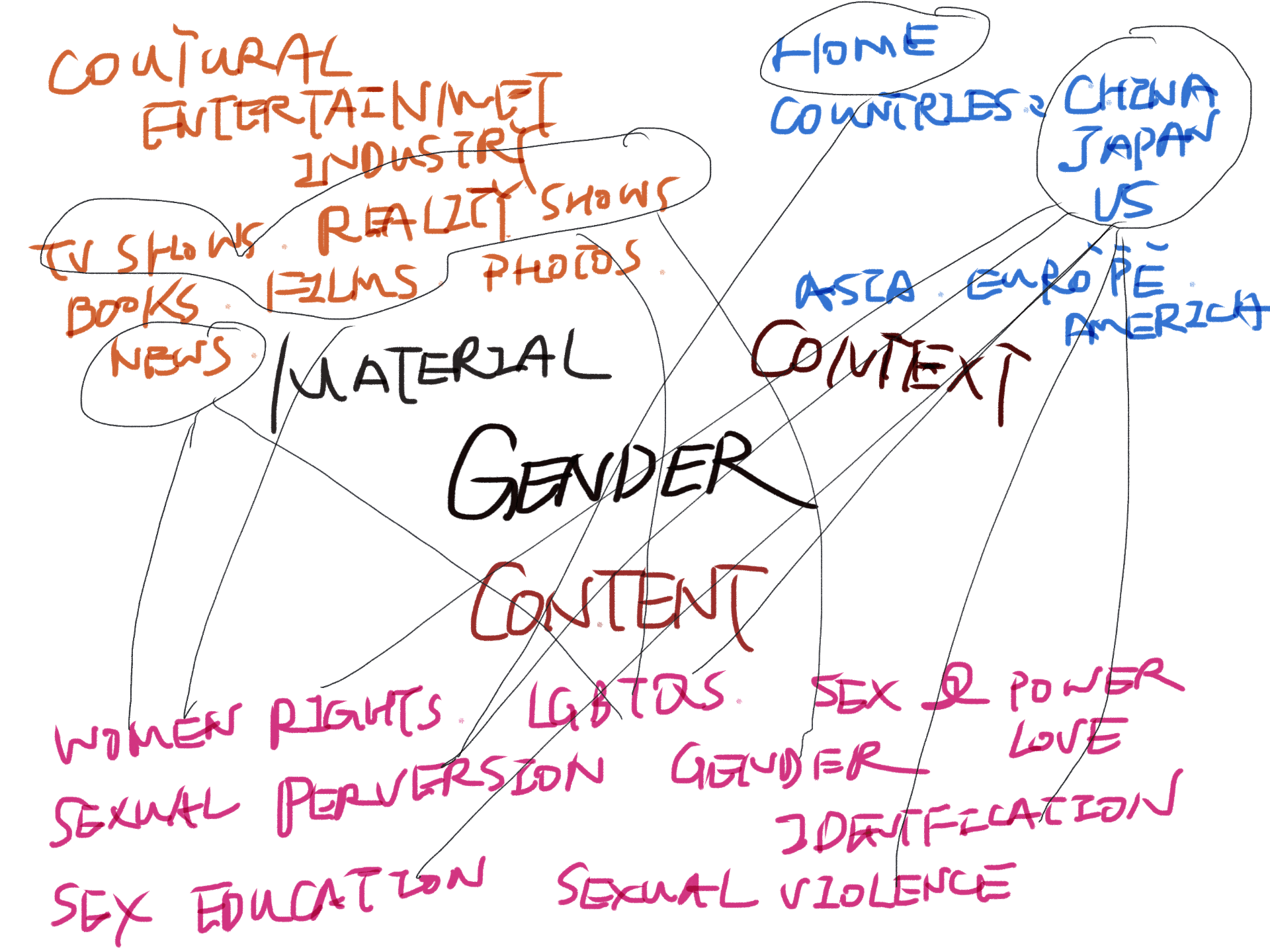I’ve been thinking a lot about questions of Gender, including content, context and material, but I think I’ve got more than ten. I hope my exploration of Gender is more in line with the different views of different countries and modern people’s cognition of Gender and sexuality. “Individual countries” may be more likely to refer to China and other Asian countries, as well as the US, with a few others countries (depending on how many resources I can find).
10 Questions
- What are the stereotypes of men and women?
- Is there a difference between how women are viewed in Asia and the west today?
- Are there any differences between countries in the gender distinction now?
- What is the relationship between sex and power? (Oscar Wilde said “Everythingin the world is about sex except sex. Sex is about power.”)
- What is the relationship between sex and love?
- Are there differences between countries in the way cultural entertainment and the things on internet spread about sex? (Posting anything sexually suggestive on the Internet is largely banned in China, as are cultural entertainment industries like TV shows or movies.)
- How well do countries teach children about sex? (In China, even though sex education classes are offered, not only do they seem to be offered in very few schools, but they also teach very little. Nor do parents deliberately and comprehensively educate their children about sex.)
- How many of people grew up more or less experiencing sexual harassment and assault? How does this affect them?
- How do countries view sexual orientation?(When I was growing up in Shanghai China, not only my parents but also my school teachers and classmates did not like sexual orientation like homosexuality, but they also did not oppose it too much. Online, people tend to be more supportive of LGBTQ, which is growing in China now. But outside of Shanghai and other developed cities, there is still a strong aversion to sexual orientation other than heterosexuality, and they have no concept of LGBTQ.)
- How do people think and talk about LGBTQ in different countries? (in China, many people are still not aware of LGBTQ, and there are occasional mentions of transgender or bisexual or gay topics on the Internet, but they are mostly jokes, not serious discussions.)
- In the 21st century, how do various countries publicize female images in film and television works and entertainment industry? (In China, many TV series and movies attempt to portray independent working women, but in the stories, they often break down because of some difficulties, they are trapped by love and don’t want to work, and then finally rely on men to save them. And in some reality shows, the private lives of “real” female stars, invariably are shown as they look strong but actually fragile, often crying, with messy rooms, parents and themselves worrying that they would not get married. In Japan, their morning dramas usually show upright, kind and simple self-reliant female images.)
- What are the views of the society and the public in different countries on single women (aged around 30), single mothers and divorced women? (In China, many people hold a grudge against single women around 30. Apart from their relatives and friends urging them to date and get married, many people also make fun of these women in their daily and online conversations. For example, women postdocsaround 30 are often mocked for not being wanted by men.)
- How are women’s rights movements developed in different countries? (In China, there are many pseudo-feminists on the Internet. They advertise that they deserve “special treatment” and that men should do everything and buy everything for them. As a result, many people have a bad impression of the word “feminism”.)
- How do people discover, explore, and think about their sexual perversion?(I think a lot of people don’t really think about whether they have a sexual fetish or not.)
- What does society think of people with sexual perversion?
Mind Map

